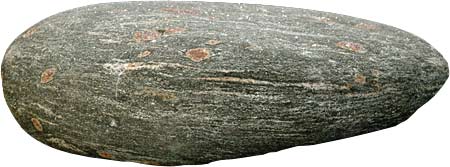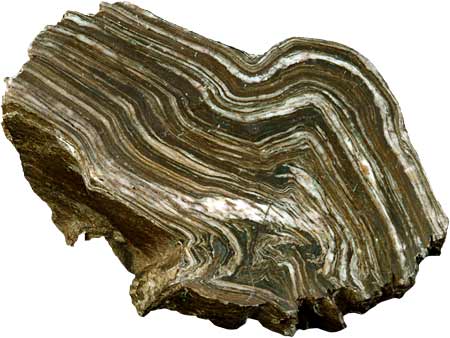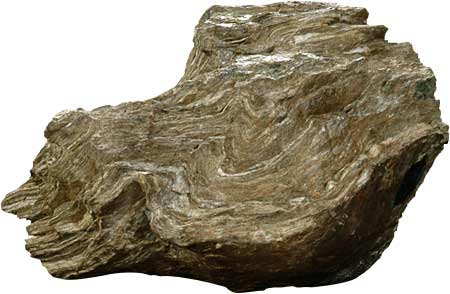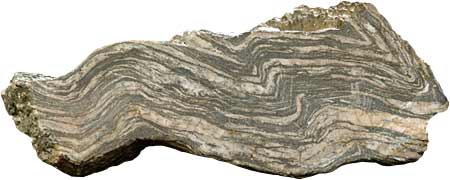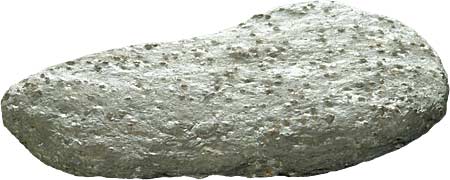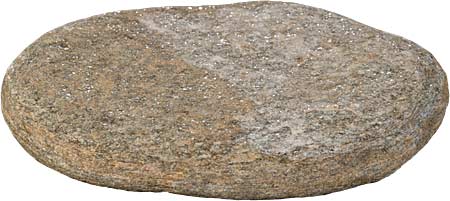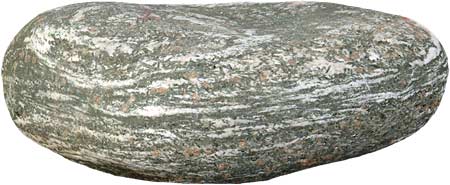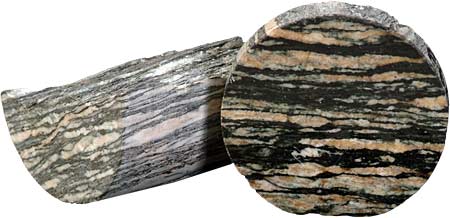Schist
Schist is medium grade metamorphic rock, formed by the metamorphosis of mudstone / shale, or some types of igneous rock, to a higher degree than slate, i.e. it has been subjected to higher temperatures and pressures. The resulting foliation is coarser and more distinct than that of slate due to the higher degree of crystallisation of mica minerals ( biotite, chlorite, muscovite) forming larger crystals, and is often referred to as schistosity. These larger crystals reflect light so that schist often has a high lustre, i.e. it is shiny. Porphyroblasts are common in schist, and they provide information on the temperature and pressure conditions under which the rock formed. Due to the more extreme formation conditions, schist often shows complex folding patterns. There are many varieties of schist and they are named for the dominant mineral comprising the rock, e.g. mica schist, green schist (green because of high chlorite content), garnet schist etc.
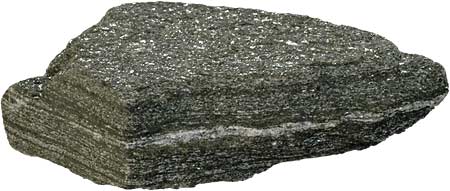
schist |
Other specimens - Click the thumbnails to enlarge 









|
Grain size - fine to medium grained; can often see crystals with the naked eye.
Hardness - generally hard.
Colour - variable - often alternating lighter and darker bands, often shiny.
Mineralogy - mica minerals ( biotite, chlorite, muscovite), quartz and plagioclase often present as monomineralic bands, garnet porphyroblasts common.
Other features - generally smoothish to touch.
Uses - generally used as a decorative rock, e.g. walls, gardens etc; high percentage of mica group minerals precludes its use in the construction and roading industries.
New Zealand occurrences - extensive occurrence throughout the South Island, e.g. Southern Alps, Central Otago area.

